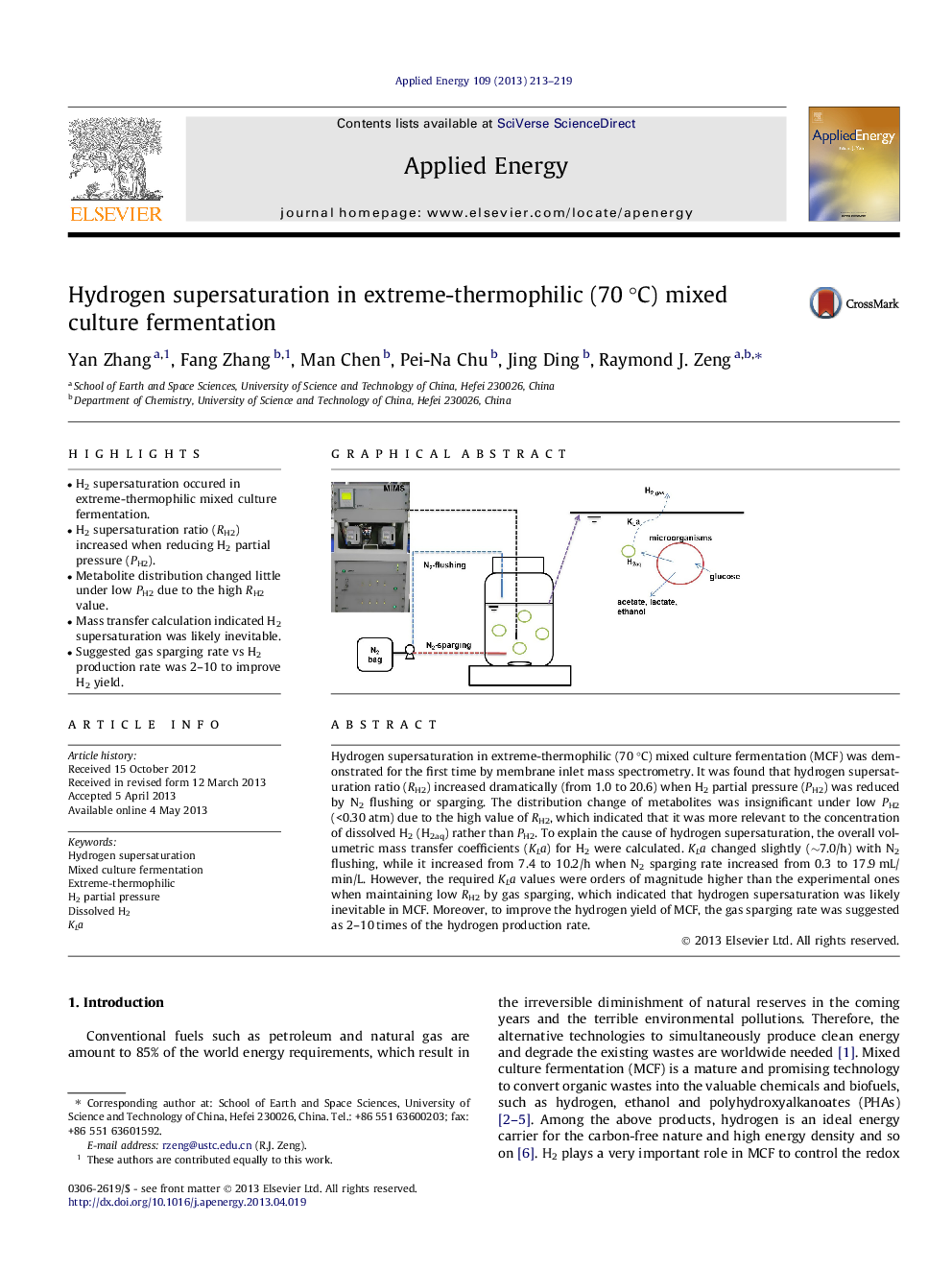| کد مقاله | کد نشریه | سال انتشار | مقاله انگلیسی | نسخه تمام متن |
|---|---|---|---|---|
| 243097 | 501919 | 2013 | 7 صفحه PDF | دانلود رایگان |

• H2 supersaturation occured in extreme-thermophilic mixed culture fermentation.
• H2 supersaturation ratio (RH2) increased when reducing H2 partial pressure (PH2).
• Metabolite distribution changed little under low PH2 due to the high RH2 value.
• Mass transfer calculation indicated H2 supersaturation was likely inevitable.
• Suggested gas sparging rate vs H2 production rate was 2–10 to improve H2 yield.
Hydrogen supersaturation in extreme-thermophilic (70 °C) mixed culture fermentation (MCF) was demonstrated for the first time by membrane inlet mass spectrometry. It was found that hydrogen supersaturation ratio (RH2) increased dramatically (from 1.0 to 20.6) when H2 partial pressure (PH2) was reduced by N2 flushing or sparging. The distribution change of metabolites was insignificant under low PH2 (<0.30 atm) due to the high value of RH2, which indicated that it was more relevant to the concentration of dissolved H2 (H2aq) rather than PH2. To explain the cause of hydrogen supersaturation, the overall volumetric mass transfer coefficients (KLa) for H2 were calculated. KLa changed slightly (∼7.0/h) with N2 flushing, while it increased from 7.4 to 10.2/h when N2 sparging rate increased from 0.3 to 17.9 mL/min/L. However, the required KLa values were orders of magnitude higher than the experimental ones when maintaining low RH2 by gas sparging, which indicated that hydrogen supersaturation was likely inevitable in MCF. Moreover, to improve the hydrogen yield of MCF, the gas sparging rate was suggested as 2–10 times of the hydrogen production rate.
Figure optionsDownload as PowerPoint slide
Journal: Applied Energy - Volume 109, September 2013, Pages 213–219